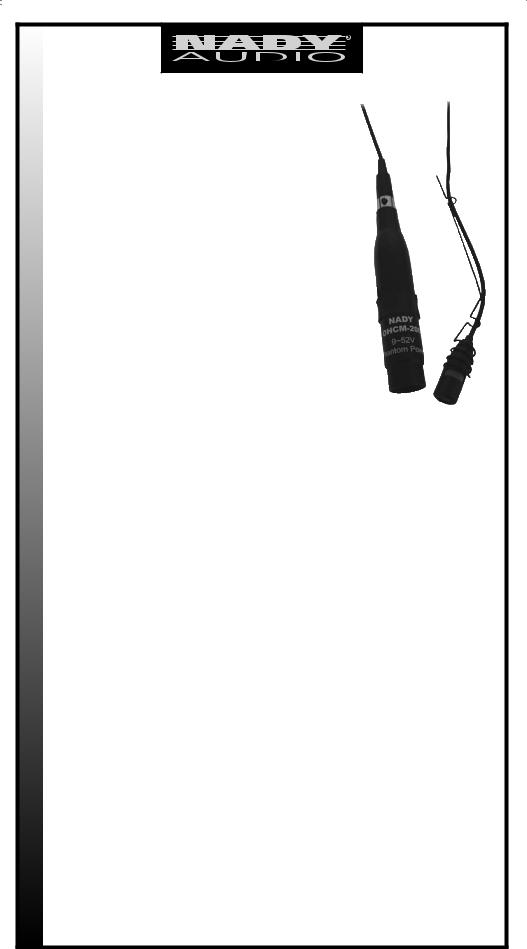Nady Systems OHCM-20 User Manual

USER GUIDE
OHCM-200
Overhead Hanging Condenser Microphone
Thanks for purchasing the Nady OHCM-200 Overhead Hanging Condenser Microphone! This microphone is a wide-range back electret condenser with a cardioid polar pattern. It is very useful in a variety of overhead hanging mic applications such as high quality sound reinforcement, professional recording, and many other demanding sound pickup situations. The microphone is designed to be powered by an external 9-52 V DC phantom power supply and is enclosed in a rugged die cast case for long-term reliability.
UNPACKING, INSPECTION, STORAGE AND TRANSPORT
Your OHCM-200 microphone was carefully packed at the factory, and the shipping carton was designed to protect the unit during shipping. Please examine your microphone before using and retain the external shipping package for reuse should you ever need to return your microphone for servicing.
USING YOUR OHCM-200
The OHCM-200 can be used with any standard mixer, powered mixer/amplifier, or mic preamp which provides 9-52V phantom power. The optional Nady 48V SMPS-1 Phantom Power Supply can also be used if your mixer doesn’t supply phantom power. Connect the supplied mini-XLR to XLR cable directly to your equipment, or use an XLR to XLR balanced low impedance cable as an extension if needed.
The OHCM-200 should be placed at the desired location and aimed at the sound source. The hanging wire must be attached at an appropriate spot to support the mic and allow proper stable aim at the source. Experiment with your mic and and its placement and you will find it to be a useful tool in many applications. Although designed primarily for high quality far field pickup of audio, such as for use with choirs and stage plays, the Nady OHCM-200 can also be used in many creative applications. For example, it can also be used closed field to pickup audio from instruments and percussion. Be aware of the proximity effect (an increase in bass response) when the mic is placed close to the instrument. This may or may not be desirable. Experimenting with the position of the mic with respect to the audio source will ensure the optimum results you are seeking in any given application.
If the microphone is placed too near a speaker during live stage use, an unpleasant howling effect (acoustic feedback) may occur. Although all microphones are prone to feedback to some extent, those with a unidirectional polar pattern (such as the OHCM-200) are specially designed to accept only signals from audio sources in front of the mic element. Thus, the cardioid pattern of the OHCM-200 ensures that it will deliver only the desired audio in front of the mic, rejecting the unwanted audio from the rear, even in noisy ambient conditions with high sound pressure levels from the P.A. and monitor speakers. This means that feedback will be greatly minimized with the OHCM-200 in all live performance miking applications. Of course, when using this mic in far field audio pickup applications, extra care must be taken to lessen feedback.
Some useful ways in which to totally eliminate annoying feedback in live use include: experimenting with mic positions with respect to the speakers, decreasing speaker volume (whenever possible), and adjusting the equalization of the mic audio with the mixer.
